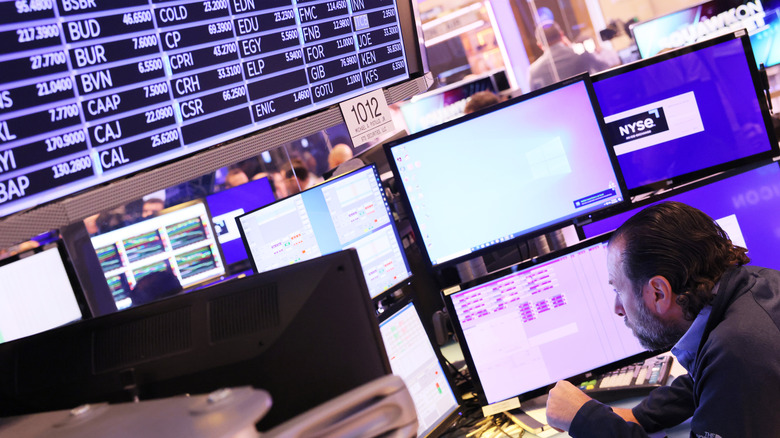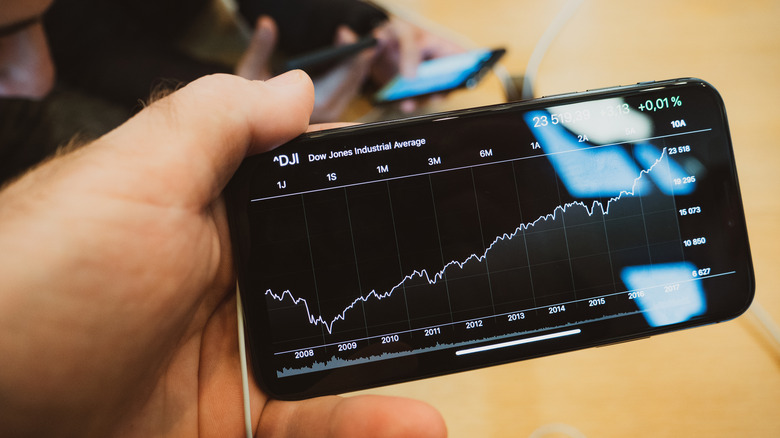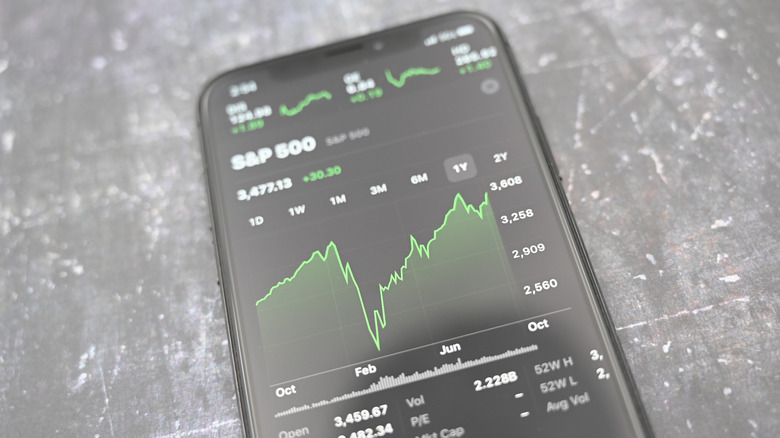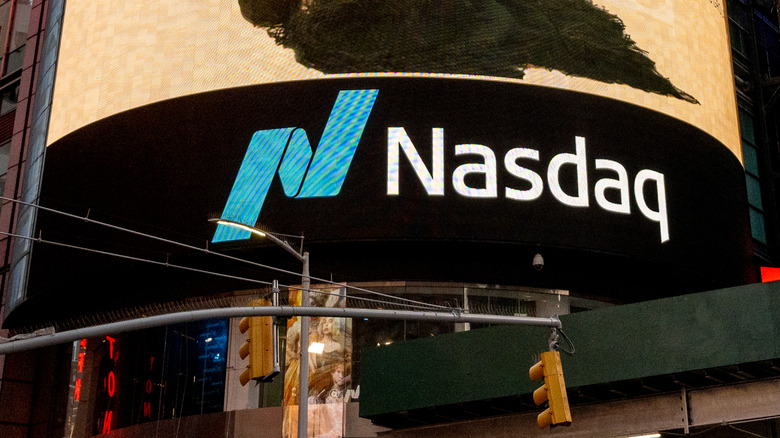What Are The Differences Between The Dow Jones, Nasdaq, And The S&P 500?
Few global financial marketplaces are as closely watched as those found in New York. After all, the city is home to the world's two largest stock markets: the New York Stock Exchange (NYSE) and the NASDAQ, and together both exchanges have a total market capitalization — that is, the overall value of a company's stocks and shares — of more than $30 trillion, per Insider. The New York Stock Exchange's companies alone carry almost 40% of the total value of the world's stock markets.
While thousands of companies are listed in either the NYSE or the NASDAQ; and a handful are known to have listed in both in a move known as "dual-listing," the two exchanges feature two very different types of stocks. Insider points out that the NYSE tends to feature more established companies that have been around for generations, while the NASDAQ is known for being a high-tech market, and the home of tech giants like Apple, Microsoft, and Amazon. Although, NASDAQ also carries listings of younger, less-established consumer companies like Starbucks, Netflix, and PepsiCo.
The movements of both exchanges are also covered by different indices: the Dow Jones Industrial Average, the S&P 500, and the Nasdaq 100.
The Dow Jones Industrial Average (DJIA) or Dow 30 explained
The venerable Dow Jones Industrial Average was started in 1884 by Charles Dow, who, with Edward Davis Jones, compiled data and information for financial firms (their firm would go on to establish The Wall Street Journal in 1889). Dow initially picked 12 industrial stocks for the original index, which he felt showed how well America's industrial sector was doing. The original 12 included the American Cotton Oil Company (now Unilever) and American Sugar Company (now Domino Foods), as well as General Electric (GE), which was removed from the Dow in 2018 after more than a century, according to The New York Times.
The list didn't remain static. According to CNBC, the number of companies in the index went from 12 to 30 in October 1928, just before the Great Depression, and companies have been removed and replaced for a number of reasons. For example, Citigroup and General Motors were replaced by Cisco Systems and Travelers after the financial crisis of the 2000s; the outlet also says firms can be bumped off the list if they're taken over, made private, or experience financial difficulty.
Today's index includes American Express, Apple, Boeing, Johnson & Johnson, Intel, IBM, Coca-Cola, Microsoft, Proctor & Gamble, as well as Visa. Dow didn't include any transportation list in his original index (he created a separate Railroad Index instead), and there are no utilities or transportation companies in the Dow 30 to this day.
Standard and Poor's 500 (S&P 500) explained
The Dow 30 may be the oldest stock index in the United States, but the Standard and Poor's 500, or the S&P 500, is seen as the best barometer for stock market movement in the country. Like the Dow, Standard & Poor's began as an information service and was the result of a merger between the Standard Statistics Bureau and Poor's Publishing. The S&P index was launched in 1926 as a tracker for 90 stocks and grew to its present size of 500 stocks in 1957. When the index launched, American Telephone and Telegraph was the most influential stock on the index because it had the biggest market capitalization or "market cap" — today, AT&T is 11th. Of the 500, 61 companies on the original list can still be found.
Inclusion in the S&P 500 isn't determined by the size of a company; they're actually selected by a committee at Standard & Poor's. The S&P committee meets every month to discuss changes to the list, and new members are only added when old ones drop out. Companies that end up exiting the S&P 500 only end up doing so because they become part of a merger, or when a business fails. Morningstar also says real estate firms and holding companies like Warren Buffett's Berkshire Hathaway can't be included. Some of the companies on the S&P index include Adobe, Allstate, Amazon, American Airlines, Ford, General Mills, McDonald's, and Monster Beverage.
Nasdaq 100 explained
When compared with the Dow Jones Industrials and the S&P 500, the Nasdaq, which was created in 1985 and is just several decades old, is a spring chicken. Also, unlike the Dow Jones and the S&P, which feature companies listed on both the New York Stock Exchange and the NASDAQ Exchange, the Nasdaq only follows stocks that are listed on the younger bourse itself, with Apple and Microsoft making an appearance on the Dow, the S&P, and the Nasdaq 100.
Two indices are associated with the NASDAQ exchange: the Nasdaq composite, which measures more than 3,000 stocks and is most often quoted; and the Nasdaq 100, which represents the largest 100 companies listed on the exchange. According to the Corporate Financial Institute, the Nasdaq is seen as a tech barometer because of the nature of firms that have listed on it — even as we get to see non-tech companies like Costco, Dollar Tree, Mondelez, Starbucks, and Walgreens Boots Alliance, alongside NVIDIA, Meta Platforms, Alphabet, and Cisco.



